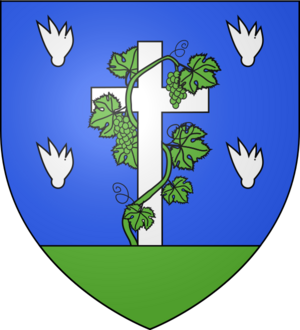Jean-Paul Bignon facts for kids
Quick facts for kids
Jean-Paul Bignon
|
|
|---|---|
 |
|
| Born | 19 September 1662 |
| Died | 14 March 1743 Île Belle, France
|
| Nationality | French |
| Education | Port-Royal Abbey, Paris Collège d'Harcourt |
Jean-Paul Bignon (born September 19, 1662, in Paris – died March 14, 1743, in Île Belle) was an important French figure. He was a priest, a government official, a writer, a preacher, and even the librarian for King Louis XIV of France.
He was known as an Abbé, which is a title for a French priest. He was also part of a religious group called the Oratory of Jesus. A scientist named Joseph Pitton de Tournefort, whom Bignon had helped, even named a type of plant, the Bignonia (also known as Virginia jasmine), after him in 1694.
Jean-Paul Bignon's Early Life
Jean-Paul Bignon was born in Paris, France. His grandfather, Jérôme Bignon, was a famous lawyer and government official. Jean-Paul was also the nephew of Count Jérôme Phélypeaux.
He started his education at the famous Abbey of Port Royal school in Paris. After that, he studied at the Collège d'Harcourt. Later, he joined the Oratory in Paris and studied to become a priest at the Seminary of Saint Magloire.
In 1691, he finished his studies and became a priest.
Work and Achievements
In 1693, Jean-Paul Bignon was given an important role as a special kind of abbot (a leader in a monastery) for Saint-Quentin-en-l'Isle. He also became a preacher for King Louis XIV. Around the same time, he was chosen to join the French Academy, a very respected group of French scholars.
The king's minister, Colbert, asked Bignon to lead a special group called the Bignon Commission. This group looked into how to create a guide about French art and industrial skills. This guide was later published as the Descriptions of the Arts and Trades.
In 1699, Bignon helped organize the royal libraries and a committee of experts who would check books.
He also worked with his uncle to create new rules for the French Academy. These rules would have allowed honorary members to join. The king approved these rules in January 1699. However, the members of the Academy did not agree with the new rules. Bignon was so upset by this rejection that he stopped attending their meetings.
Writings and Influence
Bignon was a supporter of Antoine Galland, who was the first person in Europe to translate the famous stories of One Thousand and One Nights.
Jean-Paul Bignon also wrote his own novel called Les aventures d'Abdalla, fils d'Hanif (which means The adventures of Abdalla, son of Hanif). This book was published between 1712 and 1714. It tells the story of a character searching for the fountain of youth and is full of exciting and sometimes strange adventures and love stories.
He was also known as a great preacher. For example, he gave two very different speeches on the same day to celebrate the feast day of St. Louis IX. In 1734, he was elected a Fellow of the Royal Society, which is a very prestigious group of scientists in England.



